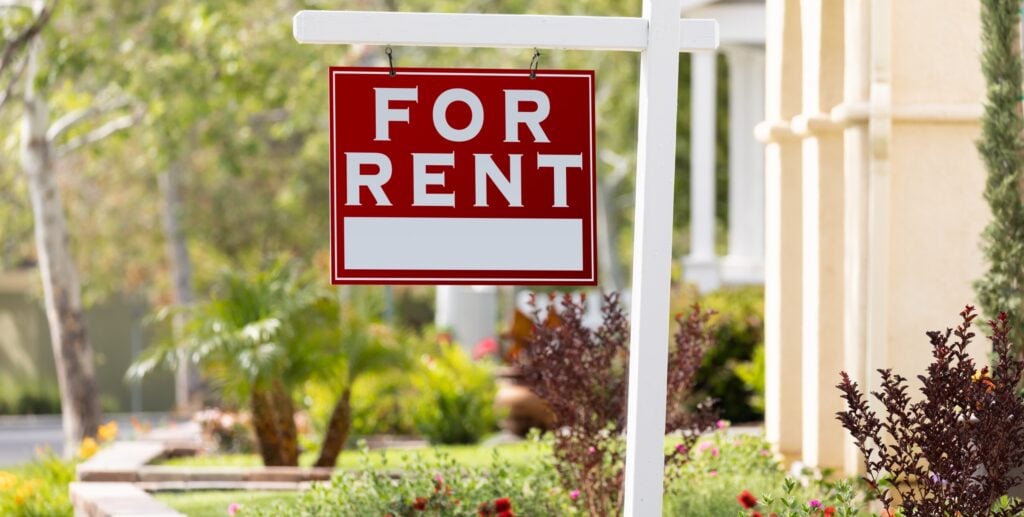Near the top of most landlord frustrations is when good tenants decide to move. It happens frequently, according to a new report by RentCafé, which reveals that 38% of tenants move within two years.
Tenant churn is one of the pitfalls of landlording and can significantly impact revenue due to the costs of repairing and redecorating an apartment, as well as the vacant period while trying to find a new tenant. Enhanced tenant protections from the government have limited the scope that landlords can apply fees to help offset overheads.
Over Half of Austin’s Renters Moved Within 24 Months
The RentCafé survey uses IPUMS ACS data (Integrated Public Use Microdata Series). This project collected and harmonized census and survey data from around the world. ACS refers to the American Community Survey, an annual survey conducted by the U.S. Census Bureau.
The report on 105 U.S. metro areas, looking at data between 2018 and 2023, notes that the Southeast, particularly Texas, had a high percentage of tenants with itchy feet.
In fact, Austin saw 54% of local renters moving to new addresses within two years, followed by Provo, Utah, in the West, at 60%. Charleston, South Carolina, was third, with nearly 55% of renters hitting the road within two years. Demographically, Gen Z renters contributed to 72% of all moves within two years in 2023.
Interestingly, although the numbers for tenants moving remain high, they have dropped by 2% from 2018 to 2023, to 38% from 40%. This decline is due to the pandemic ravaging high-density areas, job losses, and remote working, leading to a mass exodus of tenants.
Correlating this data is a report from data and analytics site Point2Homes, a sister company of rental management software company Yardi Matrix, analyzing census data, shows that overwhelmingly, renters are moving to the suburbs around America’s 20 largest metros, with suburban rental populations doubling between 2018 and 2023, forcing developers to focus more on multifamily communities than urban locations.
Why the Uptick in Renter Movement?
Affordability
Affordability is the common cause underpinning the many reasons people move. Whether it’s job relocation, a desire to live in a more spacious property, or access to good schools, the surge is fueled by the desire to get more bang for your rental buck, as the rapid increase in the cost of living has left many Americans struggling to cover their housing costs.
Only 3% of respondents believe housing costs in the U.S. are “reasonable,” according to a survey conducted by Tavern Research for the Searchlight Institute. An overwhelming 94% said housing costs were either “a little high,” “too high,” or “way too high.” With housing affordability at a four-decade low relative to income and 50% of renter households classified as cost-burdened, the results are hardly surprising.
Job mobility and work-from-home flexibility
Being able to work from home appeals to renters who are no longer hitched to commutable areas.
More housing options with new construction increase tenant churn
It’s not surprising that tenants are moving to mostly Sunbelt areas, where the new construction of apartments has been most robust, according to a report from the National Multifamily Housing Council (NMHC) cited by Davis Vanguard. Conversely, where the production of new housing was limited, so was tenant mobility.
The report says:
“Our findings suggest that the underproduction of housing in the U.S., aside from making housing less affordable, may also be inhibiting renter mobility, which has been on the decline for decades. This means that renters may not always be able to move homes for better employment prospects, in search of better or cheaper housing, or even to form a household in the first place….Regardless of causality, certain types of moves, such as household formation and in-migration, simply wouldn’t be possible without the addition of new units.”
Migration Trends to Watch
Smart Rent tracks tenant migration into specific trends:
- The attraction to Sunbelt metros shows no sign of waning: Phoenix, Tampa, Raleigh, and Nashville will continue to pull in new tenants due to affordability, employment opportunities, and lifestyle.
- Suburban leasing growth near major metros appeals to workers on hybrid or remote schedules, as well as those seeking more space and a better quality of life.
- Built-to-rent (BTR) and single-family rental (SFR) expansion in Sunbelt states offers rental amenities without an apartment lifestyle.
Steps Landlords Can Take to Minimize Tenant Movement
The ideal tenant who stays five years or more may go the way of the dodo bird, as more renters struggle with the challenges of being cost-burdened. Landlords face higher expenses such as insurance, construction costs, and persistently high interest rates. However, there are some common-sense moves landlords can make to encourage their tenants to stay longer.
Offer flexible renewal incentives
Instead of the standard 12-month lease renewal with a baked-in 5% rental increase, a landlord might consider incremental rent discounts or perks on second-year renewals. Small financial levers can push tenants to stay rather than incur the cost of moving and testing the market.
Invest in the tenant experience
Whether you own a single-family rental, a small multifamily, or a large apartment complex, tenants want to feel comfortable, secure, and proud of where they live, and happy to invite friends over. Investing in the tenant experience rather than offering a standard “rental-grade apartment” can go a long way, and can also help future-proof your apartment in the process.
Update the design
Some upgrades to consider:
- Vinyl plank flooring is not only better-looking than carpet, but also more hard-wearing.
- Granite countertops are more resilient than Formica.
- Lighting upgrades are relatively affordable, but can make a big difference.
- Investing in a quality keypad entry and video doorbell offers an increased sense of security while allowing the landlord to monitor comings and goings.
- Appliance upgrades from electric and gas to induction not only look good, but are fireproof.
Responding to maintenance requests quickly and creating a seamless online/smartphone-compatible method of communicating and paying rent will put tenants at ease and make them more likely to respond.
Tiered lease structures and guarantees
Experimenting with multiyear lease options with moderate increases or guaranteed renewal rates offsets the fear of sudden rent surges, such as what occurred after the pandemic, giving tenants peace of mind and the ability to plan. It also offers the landlord predictable income for a period of time.
Final Thoughts
When incentivized, tenants will renew their leases, according to the Wall Street Journal, which highlighted a cash-back rewards program to keep them in place.
Starting the lease renewal conversation early is only half the battle to keeping a tenant. Treating the job as an administrative task to be undertaken three months before your tenant’s lease ends is a mistake. Instead, it’s a job that starts the moment they walk through the front door. Ultimately, the decision to stay in a rental, if there are no extenuating circumstances, comes down to a combination of financial and lifestyle choices.
Assuming you do not own a large rental community with a slew of amenities, clubhouse events, and opportunities to bond with other tenants, being aware of your tenants’ needs while managing your own responsibilities to pay bills and make a profit is a balancing act. If a tenant is comfortable where they live, a landlord should make it easier for them to stay rather than incur the hassle of moving, which has significant financial and time costs.
There is usually a tipping point. Finding it will help you increase your retention rates.








